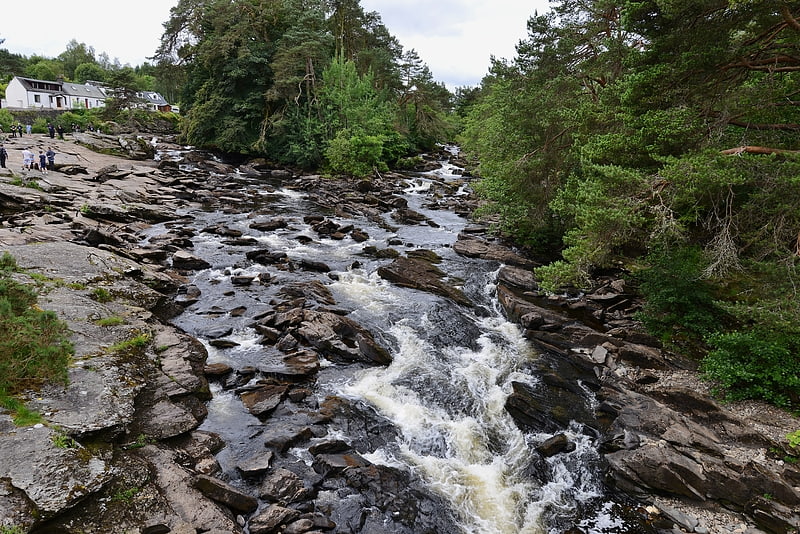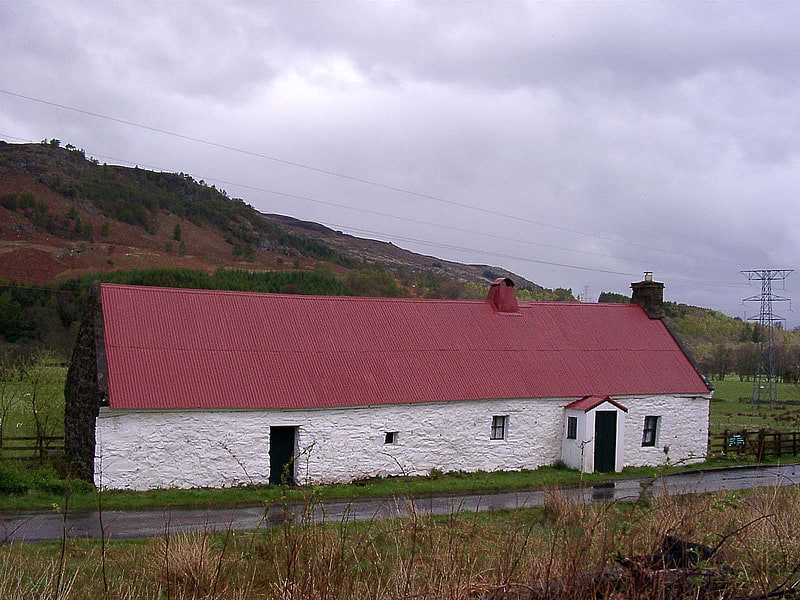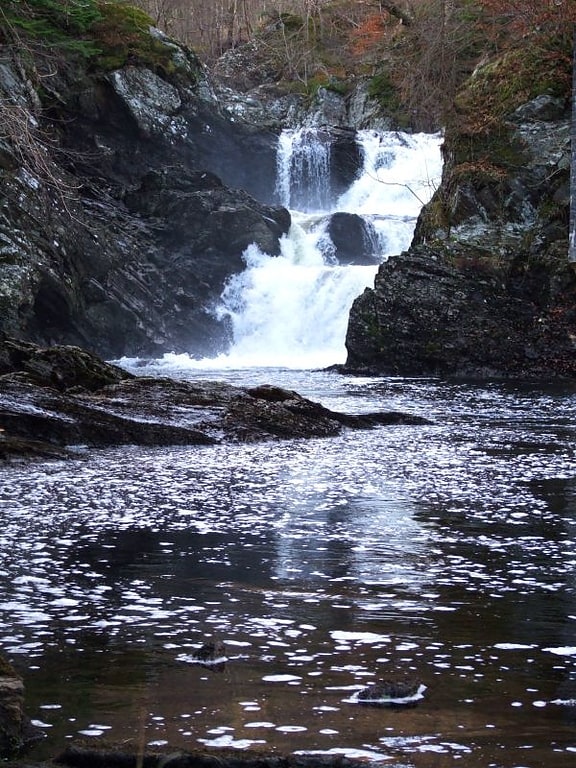Discover 7 hidden attractions, cool sights, and unusual things to do in Killin (United Kingdom). Don't miss out on these must-see attractions: Falls of Dochart, Moirlanich Longhouse, and Falls of Lochay. Also, be sure to include Falls of Edinample in your itinerary.
Below, you can find the list of the most amazing places you should visit in Killin (Scotland).
Table of Contents
Falls of Dochart

Waterfall. The Falls of Dochart are a cascade of waterfalls situated on the River Dochart at Killin in Stirling, Scotland, near the western end of Loch Tay. The Bridge of Dochart, first constructed in 1760, crosses the river at Killin offering a view of the falls as they cascade over the rocks and around the island of Inchbuie, which is the ancient burial place of the MacNab clan.[1]
Address: Gray Street, Killin
Moirlanich Longhouse

Historical landmark in Scotland. Moirlanich Longhouse is a rare example of a cruck frame Scottish cottage. It is located at grid reference NN562341 in Glen Lochay near Killin in the Stirling council area, Scotland. It is owned by the National Trust for Scotland and is open to visitors from May to September.
Removal of the corrugated roof during a recent renovation revealed the remains of the original thatched roof and analysis of this has added significantly to knowledge of thatching in Scotland.[2]
Address: Glen Lochay, FK21 8UA Killin
Falls of Lochay

Waterfall in Scotland. Falls of Lochay is a waterfall in Scotland.[3]
Falls of Edinample

The falls of Edinample is a waterfall near the village of Craggan in the district of Stirling in Scotland.[4]
Killin Stone Circle

Historical landmark in Scotland. Killin Stone Circle is a prehistoric stone circle situated at the west end of Loch Tay near the village of Killin, Stirling, Scotland. It is a scheduled monument.[5]
Inchbuie

Island in Killin, Scotland. Inchbuie is an island of the River Dochart, near Killin. A bridge links it with both riverbanks, just below the Falls of Dochart.
The MacNab Clan were once dominant here, and have long been associated with Killin. Their ancient burial ground is visible from the bridge. The walled enclosure features two 18th century naive 'busts' on top of the walls, and the monuments within include a late medieval effigy of a warrior in the West Highland style (one of only two known examples outside Argyll and the Hebrides).[6]
Finlarig Castle

Historical landmark in Scotland. Finlarig Castle is an early 17th-century castle standing on a mound on a peninsula between the River Lochay and Loch Tay, just over 1⁄2 mile north of Killin in Stirling, Scotland.
Built in 1629 by 'Black' Duncan Campbell (Donnchadh Dubh) of Glenorchy, the castle is an L-plan tower-house, formerly protected by an outer enclosure or barmekin, which is now in a dangerously ruinous condition. It was one of many strongholds built in Argyll and Perthshire by the Campbells of Breadalbane. The castle was visited by Rob Roy MacGregor in 1713.
Near the Castle's north wall is a stone-lined pit which, legend has it, was used for beheading prisoners of noble blood. Commoners were hanged on a nearby oak tree. Near the Castle are the remnants of the Breadalbane Mausoleum, a mock-Tudor chapel erected in 1829 on the site of an earlier chapel and burial place founded in 1523 by an ancestor of the Earls of Breadalbane, Sir Colin Campbell. Allowed to decay over many years, this brick-built building has almost completely collapsed.[7]